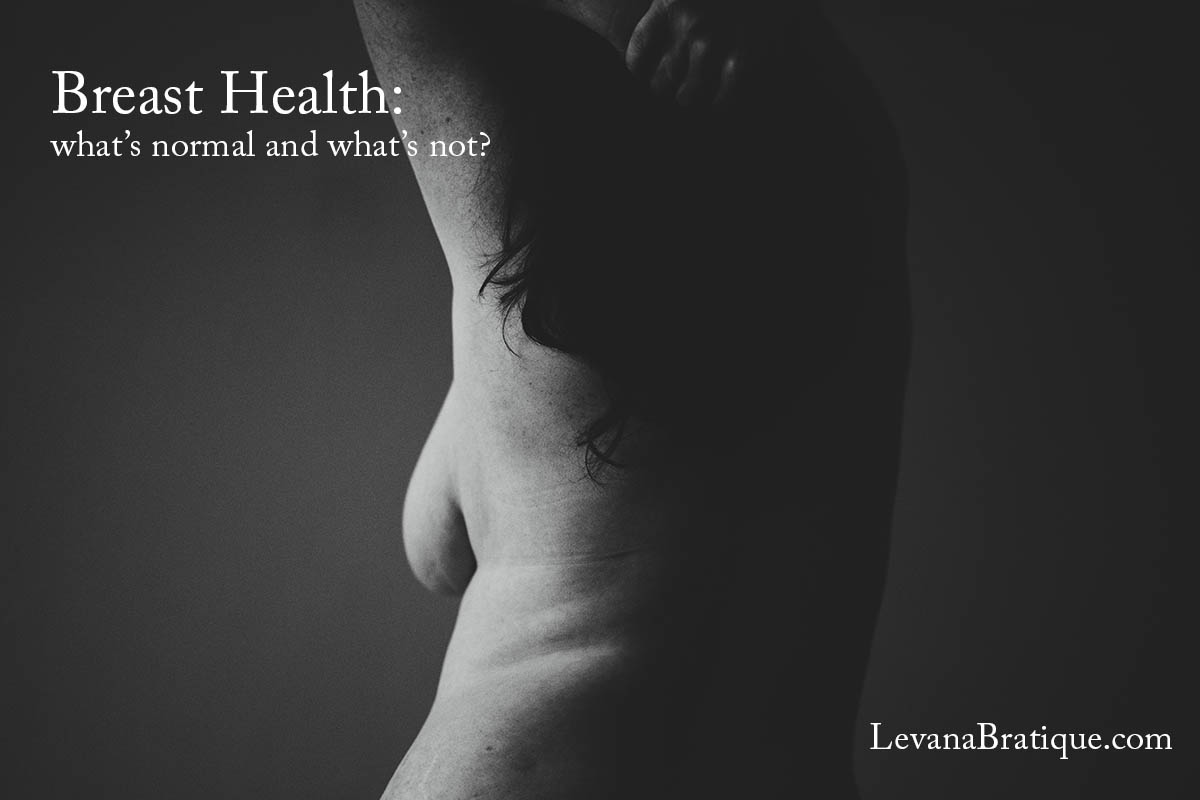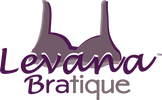Breast Health: What's Normal and What's Not?
15th Oct 2019
We’re all about self care here at Levana Bratique, and with October being Breast Cancer Awareness Month, this makes for a great time to talk about breast health.

No matter your age, to keep your breasts healthy it helps to learn what's normal and what's not, including what’s normal for you. Just like every other part of our bodies, our breasts change depending on our age and stage of life, and just like you pay attention to your skin to watch for new moles (you do that, right?) knowing what your breasts look and feel like can help you recognize if something is suddenly different.
This article talks about what’s normal, and what is a change you should talk to your doctor about. For example, it’s completely normal if:
- Your breasts are slightly different sizes.
- One breast hangs slightly lower than the other.
- You have hair around your nipples.
- Your breasts hurt or feel tender before and during your period.
- Your nipples are inverted (about 10% of women have naturally inverted nipples- it’s not a problem if you’ve had them all along.)
Things worth making an appointment with your doctor for (these don't always mean something's wrong- they may be harmless changes, caused by an easily treated irritation or infection, or rarely, they can be signs of cancer):
- A firm lump you've never felt before
- Swelling around your breast, collarbone, or armpit
- Dry, cracked, red, or thickened skin (like an orange peel) around your nipple
- Blood or fluid (besides milk) leaking from your nipples
- Warmth or itching in your breasts
- Your normally ‘outie’ nipple starts to pull in and look like an ‘innie’
It’s also worth talking to your doctor about things that may put you at higher risk for breast cancer. There are many factors that can increase your risk, like smoking, drinking alcohol, a family history of breast cancer, not having children, having children after age 30, having your first period before age 12, taking birth control, going through menopause later than normal, or take certain hormone drugs for longer than 5 years during menopause.
Lots of changes happen naturally to our breasts during pregnancy and breastfeeding as well. Normal, pregnancy-related changes can be: breasts getting larger and more tender, nipples getting darker and blood vessels becoming more visible, breast tissue getting lumpier, and cysts and other non-cancerous tumors can form or get larger during pregnancy. While the vast majority of lumps discovered by pregnant women are not cancer, you should still talk to your doctor about any new lumps you feel.
After you give birth, breasts can feel hard and tender as they swell and fill with milk. Breastfeeding can give you sore, cracked nipples, plugged milk ducts, or lead to a painful infection called mastitis, which needs to be treated with antibiotics. As we age, we’ll notice physical changes in our breasts. During menopause or perimenopause, the glands that make milk shrink and are replaced with new fat tissue, so your bra-cup size may go up. The effects of gravity also begin to take their toll, so our breasts begin to sag more. Breast cancer risk also goes up as we age, so talk to your doctor about when you should start getting mammograms.
No matter your age, you can lower your risk of breast cancer by limiting alcohol to one drink a day or less, quitting smoking, maintaining a healthy weight, getting at least 150 minutes of moderate exercise a week, and eating a balanced diet with plenty of fruits and veggies.
If you’ve never done a breast self exam at home, ask your doctor to show you how, or read this handy article. You should do a self exam once a month; if you are still getting your period, do it about 5 days after your period starts. If you aren’t, the first of every month is an easy way to remember. Let your doctor know right away if you notice any changes. It's never too early to start thinking about how to keep your breasts healthy for life, or too late to start making changes for the better.
Photo by Annie Spratt on Unsplash

